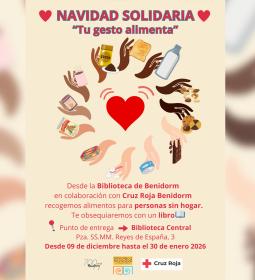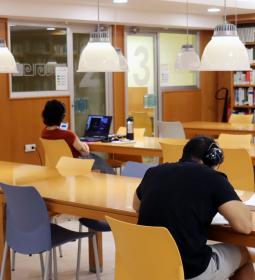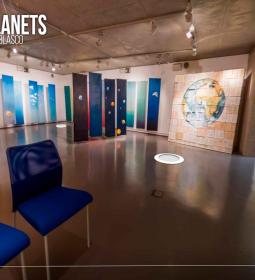Lecture by Feliciana Sala, Jesús Moratalla and Marta Peña on the musealization of the Tossal de la Cala site
Caring for the 'Castellum' "so that future generations continue to enjoy it"

Yesterday afternoon, the Assembly Hall of the City Council hosted a conference by Feliciana Sala and Jesús Moratalla, from the Department of Archeology of the University of Alicante, responsible for the five excavation campaigns carried out at the site by the City Council, together with the engineer Marta Peña , which has worked on the musealization project.
The councillor for Historical and Cultural Heritage, Ana Pellicer, welcomed the speakers at a ceremony attended by the mayor, Toni Pérez, along with other members of the Municipal Corporation. Pellicer stressed that, with musealization, it will be possible to “recover, preserve and value one of our main heritage bastions; explore it, interpret it, date it. And through all this, we have been able to better understand the past and history of Benidorm and show it to the world”. Pellicer did not miss the opportunity to thank "the support of the ERDF Funds" of the European Union in safeguarding the site.
Getting into the matter, Feliciana Sala focused on the details of the excavations that began in the forties of the last century with the work of the priest José Belda and the German archaeologist Adolf Schulten, which were followed, in the following decade, by Alejandro Ramos and Miquel Tarradell, before the urbanization of the area that suffered clandestine excavations.
Sala detailed how the investigations of Enric Llobregat, in 1972, suggested that "that was a small Iberian town" and that "until the enactment of the Spanish Historical Heritage Law, in 1985, it was not possible to protect, at least in part, the Deposit".
In 2007 a turning point occurs when Sonia Bayo publishes her doctoral thesis pointing to "the Roman presence" with the discovery of kitchen elements, amulets and fragments of weapons "objects of daily life". Likewise, after its clearing in 2013, the hidden wall appears and in 2015 it is clarified that the type of “repetitive” construction demonstrated its Roman origin, compared to “the more anarchic Iberian constructions”.
Feliciana Sala clarified that the 'Castellum' of Benidorm "is a coastal surveillance system", from the Sertoriana War, between 82 and 72 BC. C. in the Iberian Peninsula, when Quinto Sertorio proclaimed himself proconsul of Hispania Citerior.
She finished the speech by pointing out that "in the next phase of work we would like to find out where the access door or doors are" to the Roman enclosure.
Next, Jesús Moratalla exhibited plans of the structure of the enclosure "which presents central street urbanism", typical of the "late republican period" and suggested that the circumstance that the top "is completely flattened, could house some type of action" that it is intended to discover in future excavations.
Moratalla emphasized the type of "typical Roman" construction in which "the walls intersect with the wall" and interlock with each other, which is not documented in Iberian constructions. Likewise, he explained that, in the enclosure, two areas are distinguished: "the military and the other residential."
Next, the engineer Marta Peña detailed the process followed in the musealization phase of the site, which has already been carried out, emphasizing the "landslide" problems that the orography of the land could generate, which have required "very specialized" actions.
Also, she Peña indicated how the service channelling system has been treated by "integrating" them with the environment; or problems suffered by technical teachers and specialists who came to suffer "an outbreak of scabies caused by mites from seagull nests." The engineer finished with the treatment carried out on the walls "so that the structures are visually differentiated", as those who visit the site warned.
The last speech of the night was made by Toni Pérez who highlighted the "great responsibility" that "valuing our heritage" entails. "A great task -he pointed out, and a colossal effort when we were convinced that it was an Iberian town", but "the qualitative leap was made" when it became 'Castellum'. And, "a great responsibility", he also abounded, "to take care of it so that future generations continue to enjoy it tomorrow".









